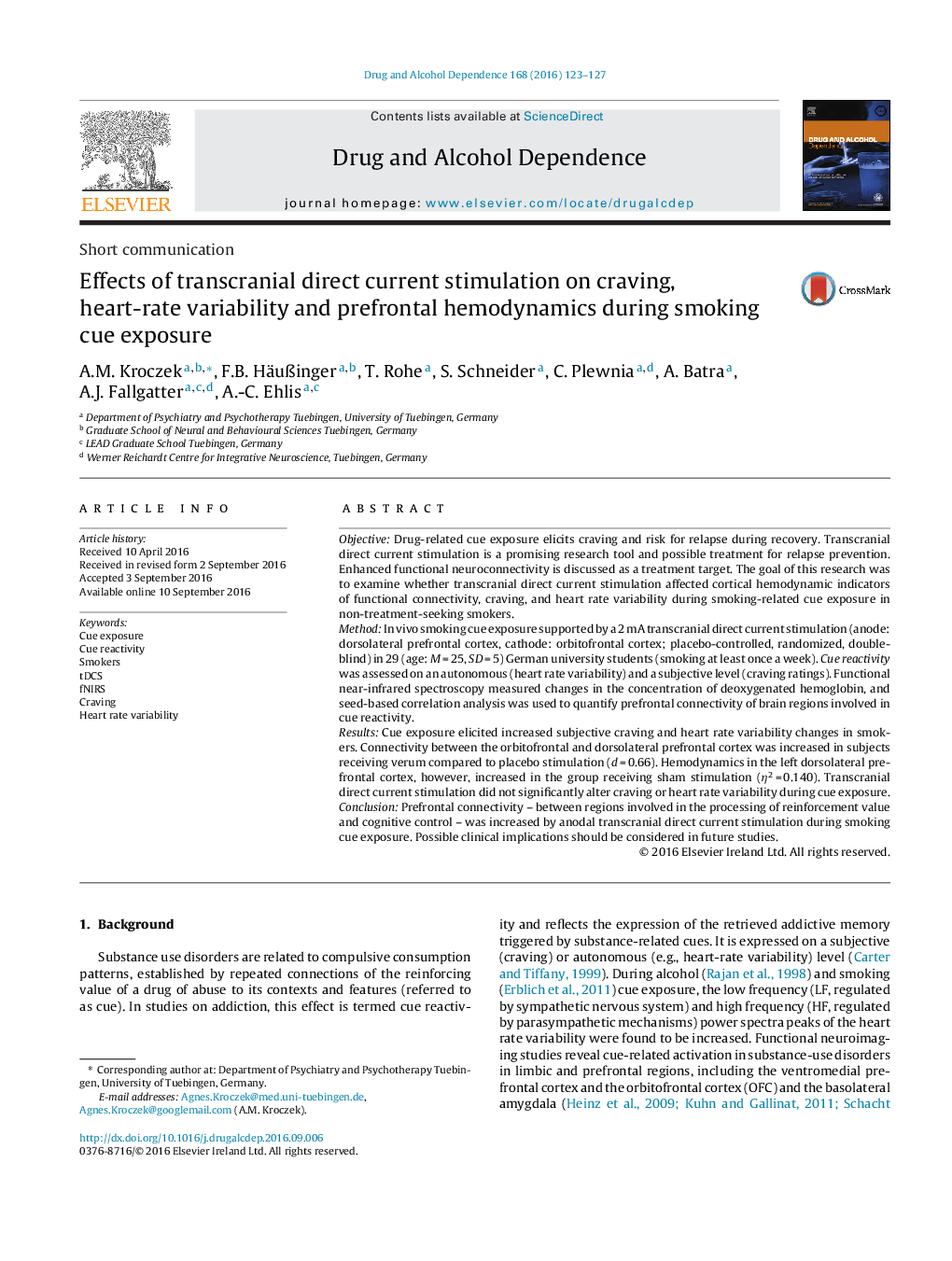| کد مقاله | کد نشریه | سال انتشار | مقاله انگلیسی | نسخه تمام متن |
|---|---|---|---|---|
| 5120456 | 1486123 | 2016 | 5 صفحه PDF | دانلود رایگان |
- FNIRS is a convenient method investigating cue reactivity in smokers.
- Activity in left BA9 is increased during cue exposure in the sham group.
- Verum tdCS increases connectivity of the left BA9 and OFC.
ObjectiveDrug-related cue exposure elicits craving and risk for relapse during recovery. Transcranial direct current stimulation is a promising research tool and possible treatment for relapse prevention. Enhanced functional neuroconnectivity is discussed as a treatment target. The goal of this research was to examine whether transcranial direct current stimulation affected cortical hemodynamic indicators of functional connectivity, craving, and heart rate variability during smoking-related cue exposure in non-treatment-seeking smokers.MethodIn vivo smoking cue exposure supported by a 2 mA transcranial direct current stimulation (anode: dorsolateral prefrontal cortex, cathode: orbitofrontal cortex; placebo-controlled, randomized, double-blind) in 29 (age: M = 25, SD = 5) German university students (smoking at least once a week). Cue reactivity was assessed on an autonomous (heart rate variability) and a subjective level (craving ratings). Functional near-infrared spectroscopy measured changes in the concentration of deoxygenated hemoglobin, and seed-based correlation analysis was used to quantify prefrontal connectivity of brain regions involved in cue reactivity.ResultsCue exposure elicited increased subjective craving and heart rate variability changes in smokers. Connectivity between the orbitofrontal and dorsolateral prefrontal cortex was increased in subjects receiving verum compared to placebo stimulation (d = 0.66). Hemodynamics in the left dorsolateral prefrontal cortex, however, increased in the group receiving sham stimulation (η2 = 0.140). Transcranial direct current stimulation did not significantly alter craving or heart rate variability during cue exposure.ConclusionPrefrontal connectivity - between regions involved in the processing of reinforcement value and cognitive control - was increased by anodal transcranial direct current stimulation during smoking cue exposure. Possible clinical implications should be considered in future studies.
200
Journal: Drug and Alcohol Dependence - Volume 168, 1 November 2016, Pages 123-127
